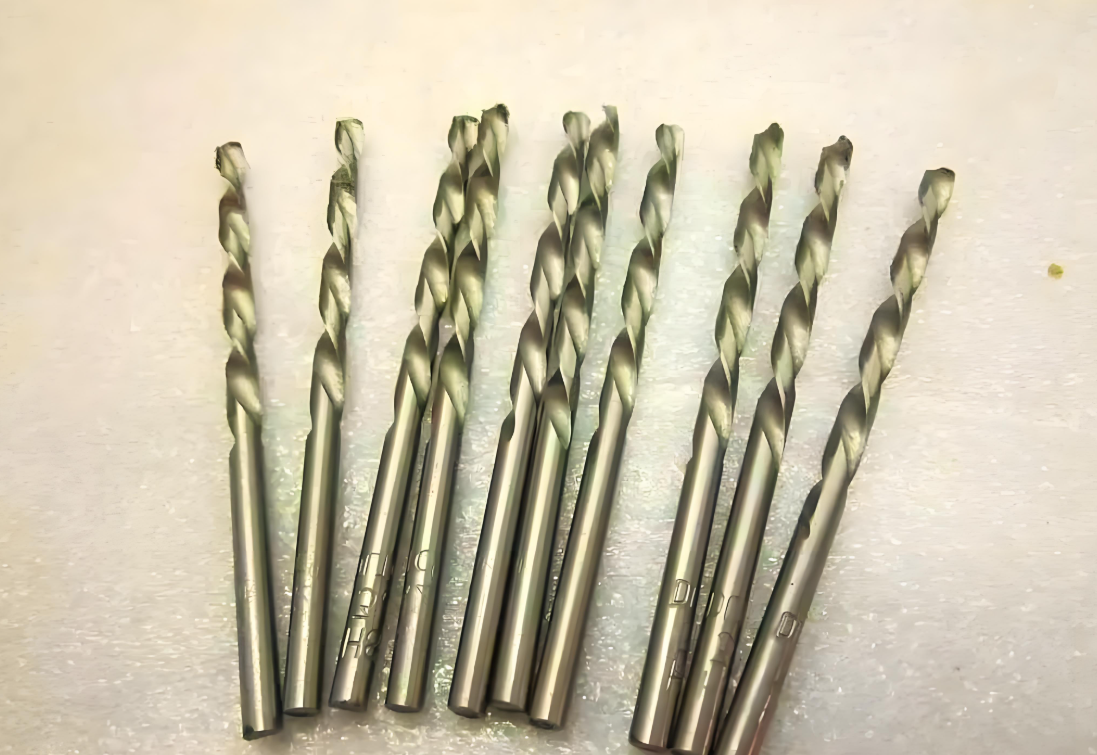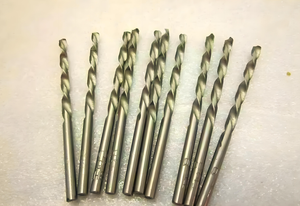
Diamond Drill Head Inspection Methods and Standards Guide Inspection Services for Warehousing and Factory Audits
The twist drill, as the most widely used hole processing tool in mechanical processing, its quality directly affects the processing efficiency, hole processing accuracy and manufacturing cost. The quality inspection of the twist drill is a systematic project, involving the entire process quality control from the warehousing of raw materials to the release of finished products. This article will deeply analyze the factory inspection and inspection process of the twist drill, the key points of quality control and the detection standards, providing a comprehensive reference guide for purchasers, quality inspectors and manufacturing enterprises.
I. Basic Knowledge of Twist Drill and Preparations Before Inspection
(1) Characteristics and Structure of Twist Drill
A twist drill is a cutting tool that drills round holes in workpieces by rotating around a fixed axis. It is named as such because its chip-removing groove is in a spiral shape. A twist drill consists of a shank, a neck, and a working part. The working part is further divided into a cutting part and a guiding part.
(2) Preparations for Factory Inspection and Goods Inspection
Technical document review: Review product specifications, material certification certificates, heat treatment process records, and geometric accuracy test reports
Verification standard confirmation: Clearly define the applicable national standards (GB/T related standards), international standards (ISO), and customer-specific requirements
Calibration of testing equipment: Ensure that the tools such as the microscope, Rockwell hardness tester, deflection checker, and roughness tester are within the calibration validity period.
Sampling plan determination: Based on the batch size, determine the sampling quantity and acceptance criteria in accordance with GB/T 2828.1-2003, and formulate the sampling inspection plan.
II. Key Points for Factory Audit of Twist Drill
(1) Quality Management System Audit
Check whether the factory has established a complete quality management system (ISO9001 certification), and review the quality manual, procedure documents, and operation instructions.
Review the supplier management procedures, especially the evaluation records of key raw material suppliers such as high-speed steel and hard alloy materials.
Review the production process control documents and their implementation status, with a particular focus on key procedures such as heat treatment, grinding, and surface treatment.
Evaluate the effectiveness of the non-conforming product control procedure and corrective/preventive measures, and establish a complete quality traceability system.
(2) Key points of on-site production inspection
Raw material warehouse: Verify the quality certificate of high-speed steel, the inspection records upon entry, and the management of material identification.
Heat Treatment Workshop: Evaluate the control of quenching temperature, the parameters of tempering process, and the detection of hardness uniformity.
Grinding processing area: Inspection of the grinding accuracy of the spiral groove, the grinding quality of the cutting edge, and the control of geometric parameters.
Finished Product Inspection Area: Verify the completeness of the inspection equipment, the standardization of the inspection records, and the statistical analysis of quality data.
III. Quality Inspection of Materials and Heat Treatment
(1) Chemical Composition Inspection of Materials
High-speed steel materials:
W6Mo5Cr4V2 or steel of equivalent performance
The chemical composition meets the requirements of GB/T 9943.
Material purity and uniformity testing
Welding twist drill:
Handle material: 45#, 60# steel or alloy steel
Welding strength and weld quality inspection
(2) Quality Inspection of Heat Treatment
Hardness Testing:
The hardness of the working part is not less than 63HRC.
Flat tail hardness: 30 - 45 HRC
Hardness uniformity test
Hardening range inspection:
Overall twist drill: 4/5 of the length of the cutting groove from the drill tip
Welding twist drill: 3/4 of the length of the cutting groove from the drill tip
Metallographic structure examination
IV. Geometric Accuracy Inspection Standards
(1) Appearance Quality Inspection
Surface Defect Inspection:
No cracks, chipped edges or burn marks are allowed.
The cutting edge has no blunt spots or other defects.
Surface treatment quality assessment
Surface roughness inspection:
Behind the cutting edge: Ra ≤ 0.63 μm
Edge band: Ra ≤ 0.32 μm
Handle section: Ra ≤ 0.63 μm
Neck: Ra ≤ 12.5 μm
(2) Dimensional Accuracy Inspection
Control of Diameter Tolerance:
The dimensional deviations of the work part comply with national standards.
Diameter consistency check
Position tolerance inspection:
Position tolerance control of ordinary grade twist drills
Precision grade twist drill position tolerance requirements
Tapping tolerance inspection
(3) Geometric Parameter Verification
Inclined taper verification:
Work section diameter reverse taper
It is 0.03 to 0.10 mm per 100 mm length.
Core drilling incremental inspection:
Incremental core drilling for the work section
It is 1.4 to 2.0 mm per 100 mm length.
Spiral angle test:
Spiral angle consistency check
Shape accuracy of the chip removal groove
V. Cutting Performance Test
(1) Test Condition Settings
Test Equipment:
Drills that meet the precision standards
Cutting parameters are set according to the standards.
Test Material Specifications
Test parameters:
Cutting speed and feed rate settings
Drilling depth and quantity requirements
Coolant Usage Specifications
(2) Performance Evaluation Criteria
Wear inspection:
There was no chipping or breaking of the blade after the test.
No significant wear or damage
Maintain performance and functionality
Cutting quality assessment:
Inspection of the roughness of the hole wall
Aperture accuracy measurement
Observation of chip removal situation
VI. Packaging and Labeling Inspection
(1) Product Labeling Inspection
Drill body label:
Manufacturer's logo
Twist drill diameter
Material code (HSS)
Identification clarity:
Clear and durable markings
Position is correct and uniform.
(2) Packaging Quality Inspection
Packaging Identification:
Factory name and trademark
Product standard marking
Material designation or code
Number of items, manufacturing year and month
Packaging protection:
Effectiveness of rust prevention treatment
Packaging integrity check
Transportation protection measures
VII. Inspection Rules and Quality Determination
(1) Sampling Inspection Plan
Sampling standard: Follow GB/T 2828.1-2003
Sample quantity: Determined based on batch size
Test level: General Test Level II
(2) Quality Grade Evaluation
Premium Grade: All indicators exceed the national standards.
First-class product: The main indicators meet national standards.
Qualified product: Basic indicators comply with national standards.
(III) Handling of Non-conforming Products
Defect Classification:
Serious defect: A defect that affects the functionality of the product.
Main defect: Defects that affect the performance of use.
Minor defect: A defect that does not affect the functionality.
Processing procedure:
Identification and isolation of non-conforming products
Cause analysis, corrective measures
Preventive measures formulation
VIII. Analysis of Common Quality Issues
(1) Materials and Heat Treatment Issues
Insufficient hardness:
Improper heat treatment process
Incorrect material selection
Uneven hardness:
Uneven heat treatment temperature
Uneven cooling rate
(2) Processing Accuracy Issues
Geometric accuracy deviation:
Improper grinding process parameters
Insufficient accuracy of the workpiece clamping fixtures
Surface quality defects:
Grinding burn
Edge burrs
IX. Suggestions for Quality Improvement
(1) Process Optimization
Heat Treatment Process:
Optimize the quenching and tempering process
Improve the uniformity of hardness
Grinding process:
Optimize grinding parameters
Improve geometric accuracy
(2) Quality Control
Process Control:
Strengthen process inspection
Improve quality records
Continuous improvement:
Regular quality analysis
Continuous improvement measures
X. Conclusion
The quality inspection of twist drills is a multi-dimensional systematic project involving materials science, heat treatment processes, precision processing, and quality management. Quality inspection personnel need to have a comprehensive understanding of product standards, inspection methods, and common quality issues in order to effectively control product quality. Manufacturing enterprises should establish a complete quality management system, especially strengthening control in aspects such as raw material control, heat treatment process optimization, and processing accuracy control, to ensure that the products meet national standards and customer requirements.
分享这个商品

Diamond Drill Head Inspection Methods and Standards Guide Inspection S
Metal drills, as widely used hole processing tools in mechanical manufacturing, their quality directly affects the processing efficiency and manufacturing cost.
